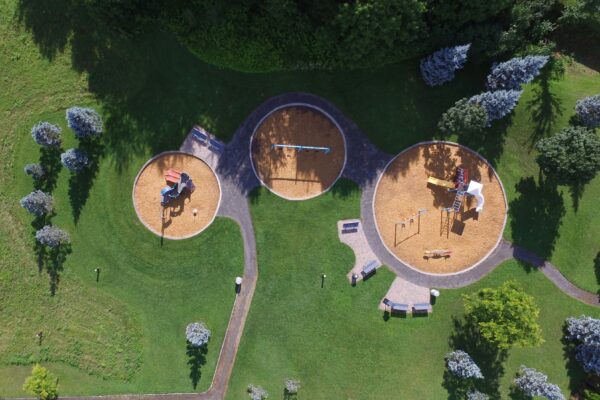What kind of painter are you?
Ellsworth Kelly or Kelly Moore?

There are a lot of models for how creative professionals interact with their clients. I want to introduce one that we’ve been using at A Hundred Monkeys recently. We have found it useful when trying to understand the relationships we want to have, and the relationships that clients are looking for.
Are you a house painter or a fine-art painter?
I think the knee jerk reaction from most creatives is “fine artist, for sure.” Makes sense. Famous fine artists are almost mythical. Basquiat, Kahlo, Ruscha — their work extends beyond art into broader culture. They’re mavericks following their hearts. Telling them what or how to paint is blasphemous. I don’t think there has ever been a famous house painter. Sure, I’ve heard of Kelly Moore and Sherwin Williams but is that one person? Two? I certainly have never seen what they look like. House painting is a respected trade. It involves brushes and color, some technique, but the similarities end there. Let’s be clear though, there are advantages and disadvantages of both jobs.

While there’s really not much tolerance for your creative whims, house painting is stable employment. Sure, some clients might ask which off-white you prefer, but most clients are specifying exactly what goes where. Bigger or more ornate homes take more time and technique and pay scales accordingly. Most days you show up to work knowing exactly what you need to do. There’s a reliability and predictability which may or may not suit you. Either way, creative block will never be an issue. A house painting business is easier to grow because the underlying skillset is fairly easy to communicate and validate. Clients most likely won’t demand you personally work on their project. As such, it’s an easy business to work on, not just in. But if you need to have your opinions heard — and more importantly, listened to — house painting is probably not the job for you. The creative vision here belongs to the client, not the painter. Sure they might listen to you about satin versus eggshell or different brands of paint, but color story? Haha, please.

Fine-art painters have a completely different set of rules when interacting with patrons or clients. Your vision, your creativity, are exactly what people are paying for. They don’t tell you how to do your job but they still have to like the result, which can create the pressure of expectation. Your past work looms large. Clients want the work you’ve already done with a personal twist that speaks to them. As the artist you don’t want to be typecast, so there’s also the pressure of constantly evolving to stay inspired, or at least interested. And most of this is assuming you’re a painter people have heard of, which, let’s face it, most aren’t. A few are famous. Some do ok. Many die penniless, or, to put it less dramatically, can’t support themselves with their art alone. If you aren’t well known, it’s much easier for clients to make demands and mettle in ways that eat at you. So if your reputation precedes you, being a fine artist is great. If it doesn’t, there’s a lot more gray area around what work is worth to you, what you’re willing to tolerate.

There are clearly advantages to both types of painting. The real thing worth thinking about here is expectations. How are you setting expectations around your work? What type of feedback is helpful for you versus what makes you want to pull your hair out? This is a two-way street. It’s also crucial to figure out how your clients think about this stuff. What’s their expectation for interaction and collaboration? Does it align with your own expectations? The earlier you have these conversations, the better. Being open about communication style might feel awkward at first but it’s way better than having to bring it up mid-project once there’s a clear misalignment. Knowing the type of painter you want to be will pay dividends with your clients and within your company. Because that’s the thing about the commercial arts—it sits between the poles of fine art and business. It’s at once introverted and extroverted, creative and professional. This creates an ambiguity that’s up to you to clarify in a way that works for everyone involved.
Happy painting.

